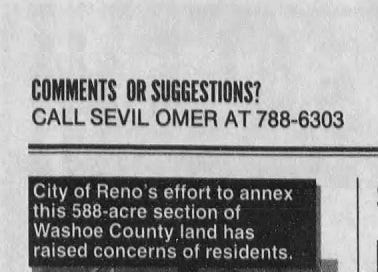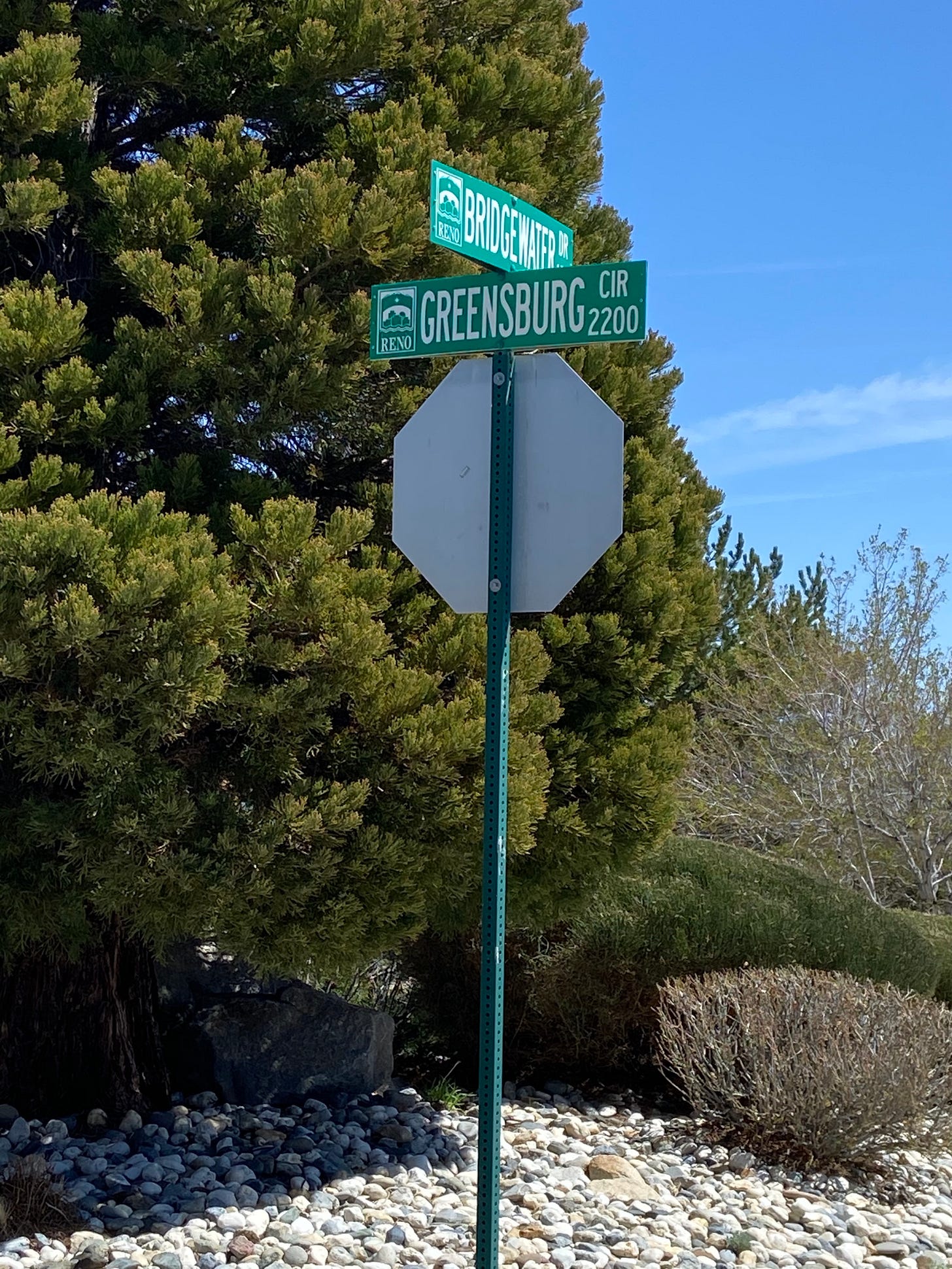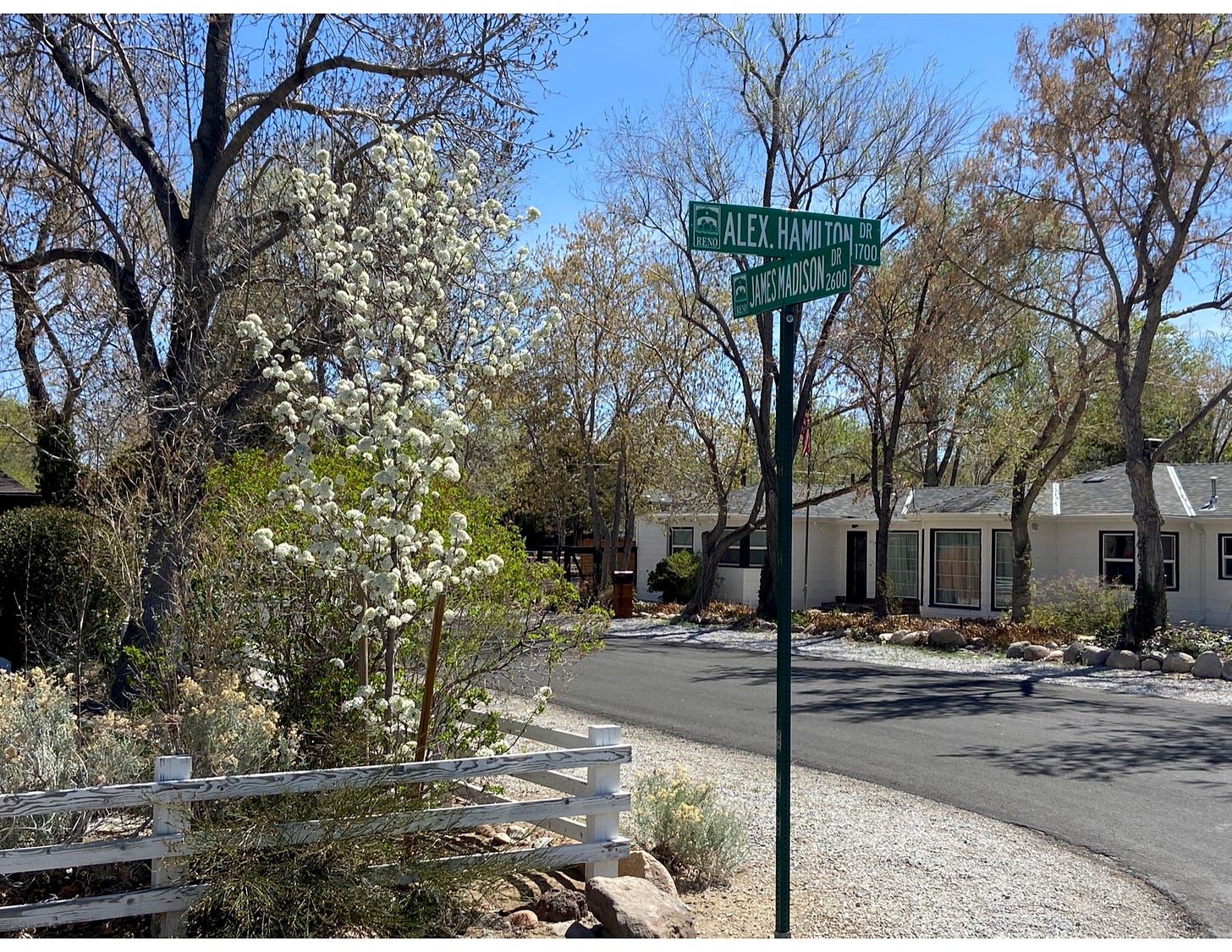Few things animate me more than talking about sewer. To put it mildly. After years of thinking about it, I’ve come to believe that for a medium size region – we should hit the half million mark sometime next year- we have a complex and fragmented approach to sewer service. And a looming price tag as I pointed out last year in an election related opinion piece that you can read here:
https://www.rgj.com/story/opinion/voices/2020/05/15/we-cant-leave-central-reno-sewer-customers-hook-two-treatment-plants-brekhus/5204221002/
In addition to the forward coming price tag to support North Valleys growth, the majority of Ward 1 is serviced by the aging TMWRF (also known as the Truckee Meadows Wastewater Reclamation Facility) that is also coming due for a major rehabilitation.
TMWRF is jointly owned with the City of Sparks. Reno owns two-thirds of this plant’s capacity while Sparks owns the other one-third.
An exception to the TMWRF service to Ward 1 land, is a large swath of southwest Reno that is still on believe it or not, on septic tank. This area is also known as Island 19 from a 1999 annexation effort by Reno that while arguably was a good idea at the time, lacked in follow up. You can read about that history here –
But before fast forwarding to the increasingly pressing present day Island 19 needs, here are a few thoughts about sewer service in our region. I believe these considerations contribute to the complexity of this problematic area and that there should be better understanding as the sewer story unfolds in the not distant future:
In general, county governments do not get in the sewer business. In fact, a best practice to control land intensive and sprawling regional form, it is for cities to own and operate sewer systems and to extend the piping infrastructure judiciously to manage growth. So typically, a region will have a demarcation of unincorporated land that is larger lot in size (talking about residential uses here) that is unserved by sewer. If land development at the periphery seeks to develop to smaller lot sizes necessitating sewer service, annexation to the city is required (this also helps to expand the tax base when incorporated properties pay a municipal tax rate in addition to county ones).
Washoe County however, at some point got into the sewer business and operates the region’s second largest plant known as South Truckee Meadows Wastewater Reclamation Facility (STMWRF). This plant provides sewer service to both unincorporated and incorporated land in the south and southeast portions of the valley. And due to a poorly negotiated agreement following annexation of Damonte Ranch and Double Diamond areas that were originally planned to develop as unincorporated communities, all of the money collected by STMRWF customers goes to Washoe County to run the plant. This leaves the City of Reno using rates paid for by TMWRF and Stead to pay for the maintenance of the underground collection system that takes wasted to STMWRF.
Getting Rid of Wastewater is Not an Easy Task TMWRF pipes its treated wastewater into the heavily regulated Truckee River that extends from the Lake Tahoe outlet and terminates at Pyramid Lake. Pyramid Lake is owned by the Pyramid Lake Indian tribe that is a sovereign nation in parlance of government speak. It took an actual act of the US Congress to confirm the negotiated terms (and other considerations) for TMWRF to send its wastewater downstream. Compliance with these terms is imperative and science based, making TMRWF’s operations highly complex.
STWRF on the other hand, treats wastewater that is also known as effluent to a lesser degree than TMWRF with the use of evaporation of open reservoirs near Rattlesnake. Washoe County then hauls the non-evaporating biowaste sludge off site for disposal.
You may have heard about a lawsuit related to the City of Reno and some landowners who were flooded as a result of the 2017 winter storms. At the heart of this issue, is that the Stead plant dumps its effluent into the playa Swan Lake and the combination of that pumping and stormwater runoff resulted in property damage to these citizens. The Reno Council majority (of which I do not count myself) has continued to fight these claims and is now launching a second futile trip up to the Nevada Supreme Court.
While this legal wrangling has been underway, the Council decided to continue to allow more building and wastewater to head to this substandard treatment plant. The Council also embarked upon a major expansion to facilitate more growth without understanding a solution to dispose of the increased effluent. A whole bunch of UNR scientists are trying to figure that out and they may be close to a costly idea of reinjecting water into the earth. The price tag for that will be astronomical.
I would be remiss if I did not bring up that Washoe County has another small treatment plant that discharges into another playa lake up in the far north reaches of Cold Springs. Much like in the southeast portion of the valley in the early 2000’s, Reno has annexed into the area with the massive Stonegate project and that will involve an expansion to the plant. Fingers are crossed that lessons learned were from the Swan Lake debacle and that the Cold Springs basin will not be the next screw up.
Stormwater is Different from Sewer Water Stormwater is all of that that does not flush down the drain. This is typically the snow and rain runoff that flows through streets or natural gullies and ultimately into storm drains. The City spends a lot of time and money managing stormwater. Unfortunately, the City taps sewer funds to do this. A best equitable practice is to have a separate revenue source for stormwater that bases charges upon the stormwater impact characteristics of a developed property. In this arrangement a shopping center with perhaps a WalMart rooftop and several acres of parking lot, would pay comparatively more for the runoff generated from the parcel than a landscaped suburban residential lot. The City is in the preliminary phases of setting up a stormwater district. I am a big advocate for this as it will stop sewer fees from being siphoned off for a separate purpose and hopefully relieve future rate hikes that are on their way.
Equity Among Rate Payers I objected to the Stead expansion back in 2019 because no one knew what to do with the effluent and because a rate structure had not been discussed. Some at city hall like to call Reno’s sewer service a “blended utility” meaning that rate payments are mingled together to provide a comprehensive service. This is clearly not true as STMRF rates go off to Washoe County for plant operations as previously mentioned. Furthermore, there is no feasible manner in which the Stead customer based existing and proposed can pay for the expansion of that plant. It will be borne by TMWRF (read: Ward 1) rate payers under current rate structures.
But back to Island 19. When I came on the Council in 2012, I knew that the sewer had not been extended into the area. There was talk at city hall, that it would require an assessment of all the property owners in the area to extend the lines and that discussions following annexation met with citizen resistance. I accepted this to some degree and thought that the course forward would be one of coordination overtime as roads needed to be reconstructed. This was the case in 2013 or so, when West Plumb Lane was rebuilt. As is typical when a road is opened, utility work occurs in coordination, and a new sewer line was installed.
What I did not realize in 2012 was how few roads would get rebuilt in a given year (how RTC neglects existing neighborhood roads is a topic for another day) and that the sewer fund would be paying for so much work to advance growth priorities in other areas. As example, the sewer fund has paid for extensive improvements up around the university to facilitate high rise apartments in that area. Also, the sewer fund has also paid for a lot of expansion up in Golden and Lemmon Valley. So why, is there a sense at city hall that homeowners in Island 19 have to foot the bill for their own sewer line extensions?
You got me. But I will continue to point out at the Council table how existing neighborhoods are getting the shaft in both not getting sewer line extensions while other neighborhoods that are comprised of TMWRF ratepayers are footing the bill for outlying growth. Oh, and all those septic tank leach fields? The polluting nitrate plume heading down to the Truckee River is documented.
In the meantime, to Island 19 residents, I do hear you and am trying to find a way for the Council and Mayor Schieve to understand the severity of this issue. Over the years, I have walked on many properties and have seen that some have no more leach field options. This is particularly true in the middle elevation area around La Fonda Drive.
Former Island 19 lands extend from Greensburg Drive to the south at the higher elevation, north toward the presidential named streets that intersect with West Plumb Lane at the lower elevation.
Ward 1 Update
The apartment complex on Riverside Drive that includes an abandoned portion of Washington Street has been appealed. A few neighboring property owners believe that the permit was issued in error and that there was an abuse of discretion or misapplication of the code in doing so. There will be a hearing on this May 4 before and administrative officer. Appeals of the administrative officer are then appealable to the City Council. The project is now under construction. As in all matters that may come before the Council on appeal, I reserve opining on the matter until it is heard.
The gate that was put up at Mountaingate Drive and Steamboat Ditch is still up and fines will be accruing this week if it is not removed. If it is not removed, staff has informed me that the City will have to bring the issue into court to obtain an order for removal.
Someone at city hall gave the greenlight for the Council to entertain a 33 page agreement with a lot of asks from the Jacobs Entertainment Group. In return for public consideration including tax money, they will do something. You can read about this year, or watch our meeting on Wednesday:
Or view Channel 4’s Ben Margiott piece about it in advance:
https://mynews4.com/news/local/developer-requests-millions-in-subsidies-to-finish-building-renos-neon-line-district
And the Barber Brief took a dive into it also:
https://thebarberbrief.substack.com/p/the-proposed-development-agreement
Jenny Brekhus is the Ward 1 Reno, NV, City Council Member. When opinions and views expressed, without other attribution, they are those of Jenny Brekhus and do not reflect official views or positions of the City of Reno or the Reno City Council unless otherwise noted. This publication and any response it generates communicated through any channel, may be subject to disclosure under Nevada Public Records Act if it substantively refers to City of Reno business.





